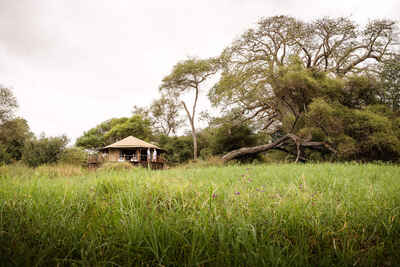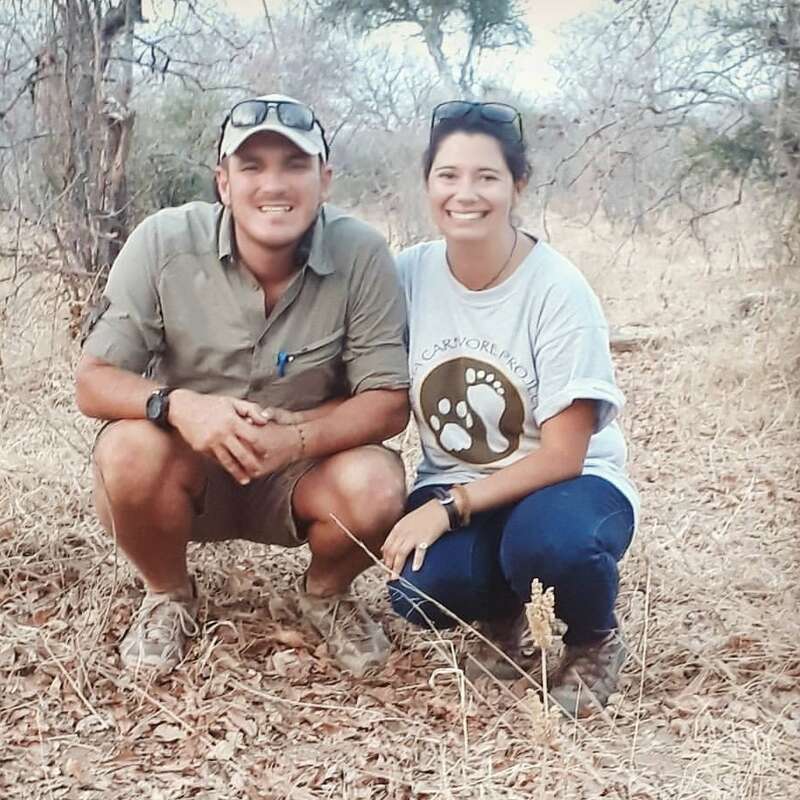About Swala Camp
On the edge of the Gursi Swamp, in the far south-west of Tanzania’s Tarangire National Park, Swala Camp sits ...
... in a quiet area, amid an area of open grassland under a grove of tall Acacia tortillis trees and baobabs. Completely rebuilt in 2009, this permanent tented camp promises high-quality accommodation, with good resident game – impala, elephant and waterbuck that are attracted to its artificial waterhole.
Swala Camp is very well-run, the service is friendly, and the rooms and main areas are stylish. It makes a good base for a couple of nights to explore Tarangire National Park. Being in the quieter southern area of the park, it takes longer to reach than the camps around Tarangire's busier northern edge, but your wildlife-viewing experience here is much more exclusive, as there are few other vehicles around.
Our view
Swala Camp is very well-run, the service is friendly, and the rooms and main areas are stylish. It makes a good base for a couple of nights to explore Tarangire National Park. Being in the quieter southern area of the park, it takes longer to reach than the camps around Tarangire's busier northern edge, but your wildlife-viewing experience here is much more exclusive, as there are few other vehicles around.
Accommodation
12 tents
Children
Best for 12+
Open
June–March
Activities

4WD Safari

Birdwatching

Cultural excursion

Guided walking safari

Hot air ballooning

Night drive

Private activities
Traveller reviews of Swala Camp
2 real, un-edited reviews from Expert Africa's travellers.
Arrived 11 Jul 2013, 3 nights
"Swala Camp review"
Overall rating: Excellent
Arrived 4 Sep 2011, 3 nights
"Swala camp review"
Overall rating: Excellent
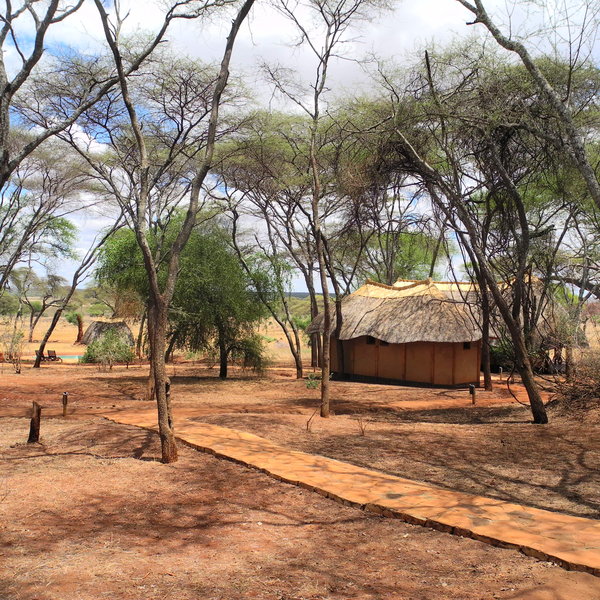
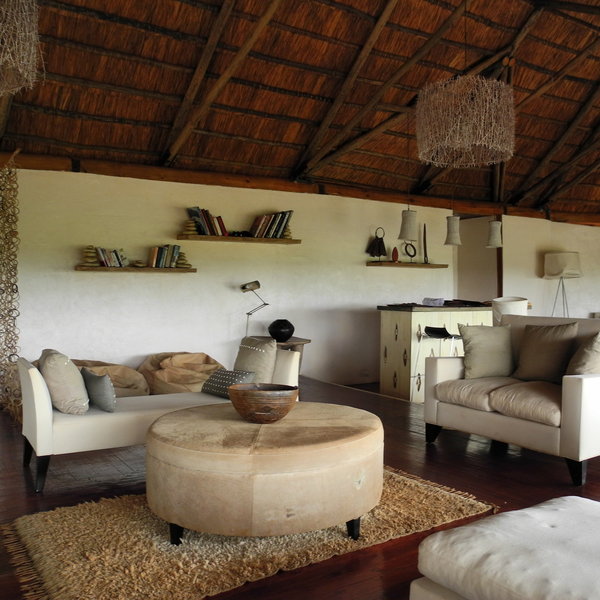
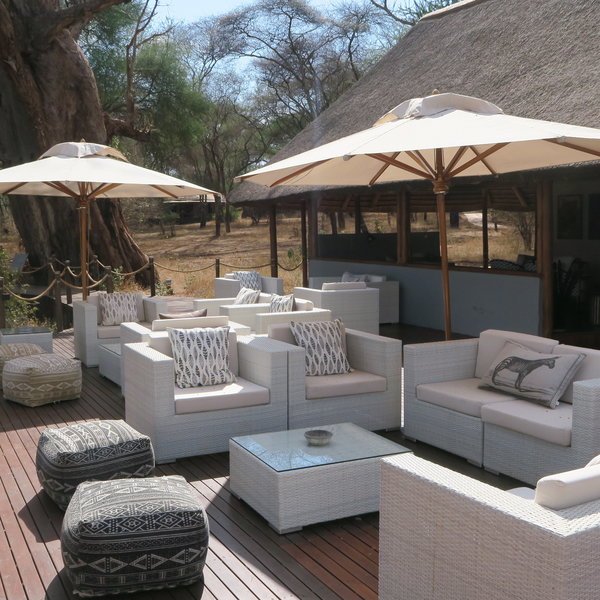
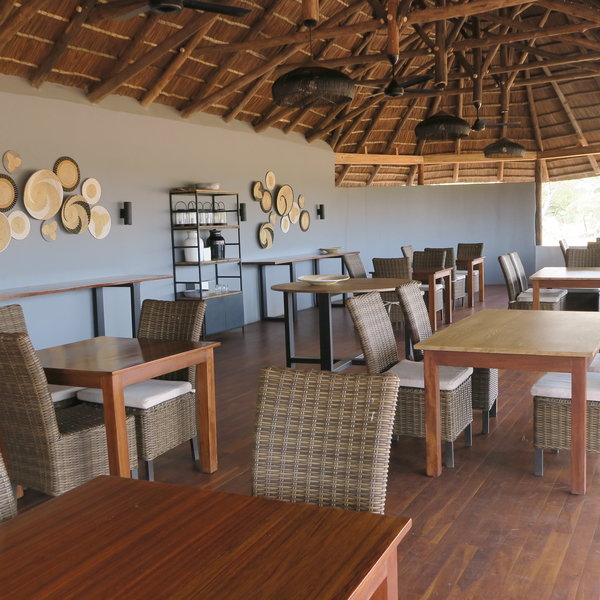
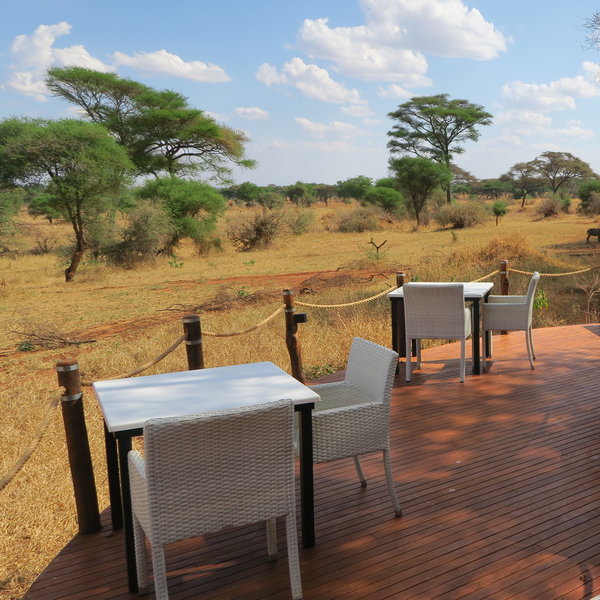
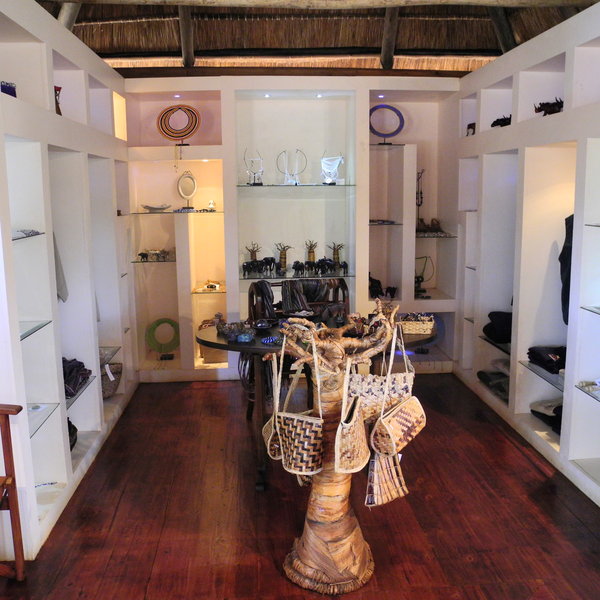
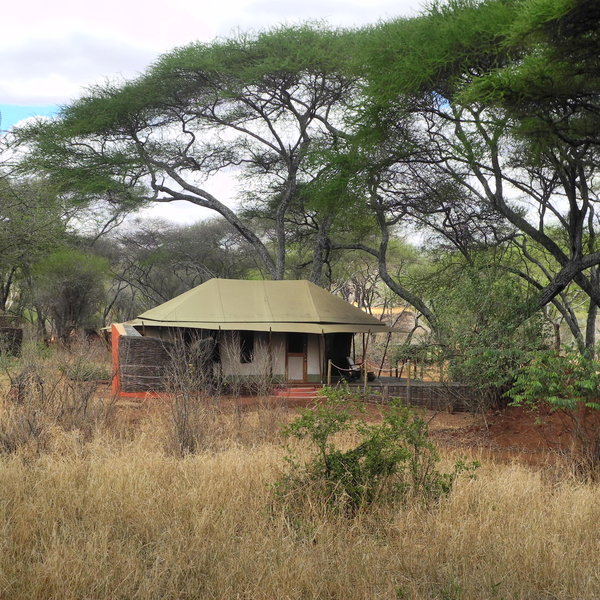
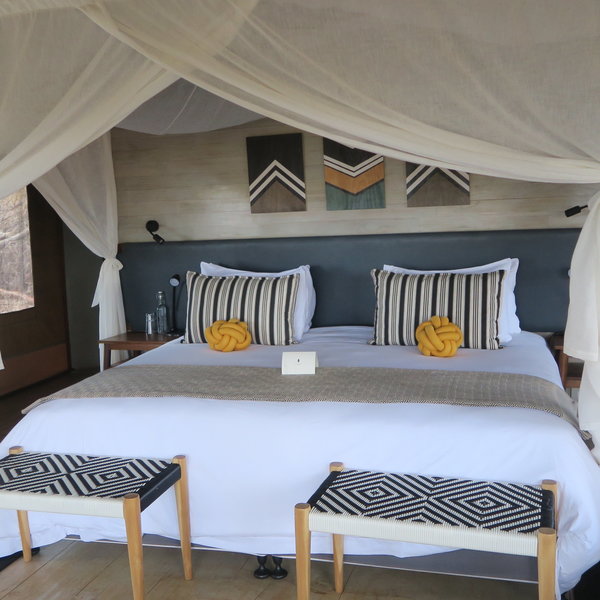
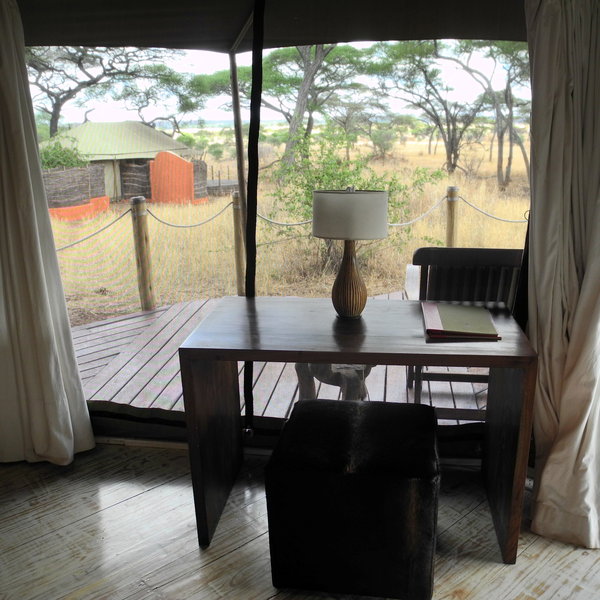
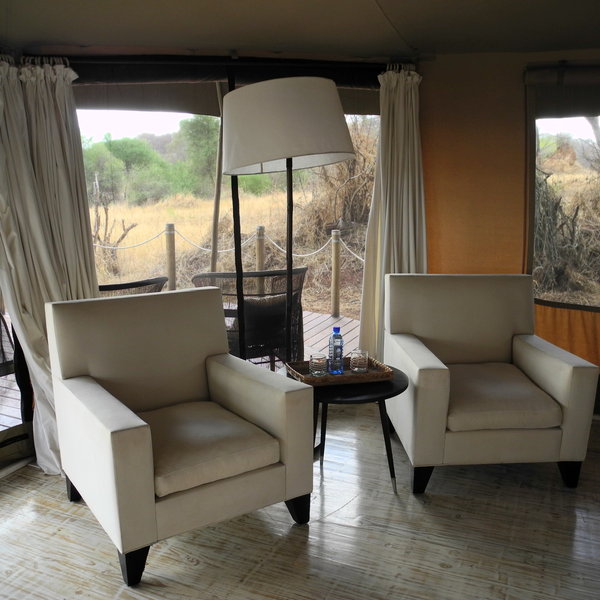
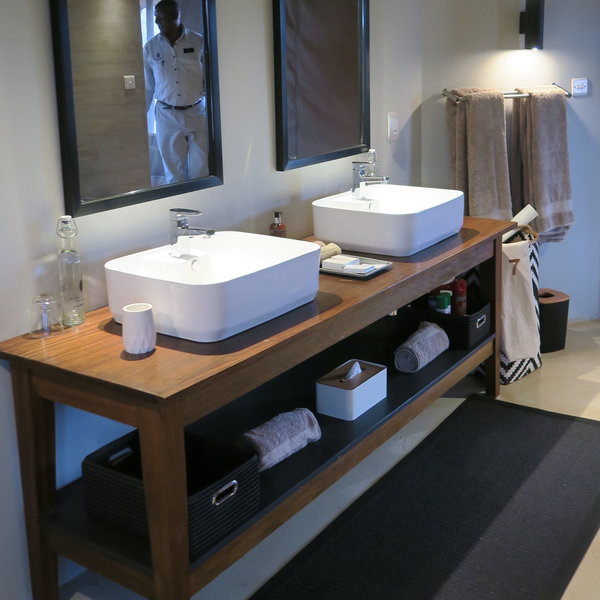
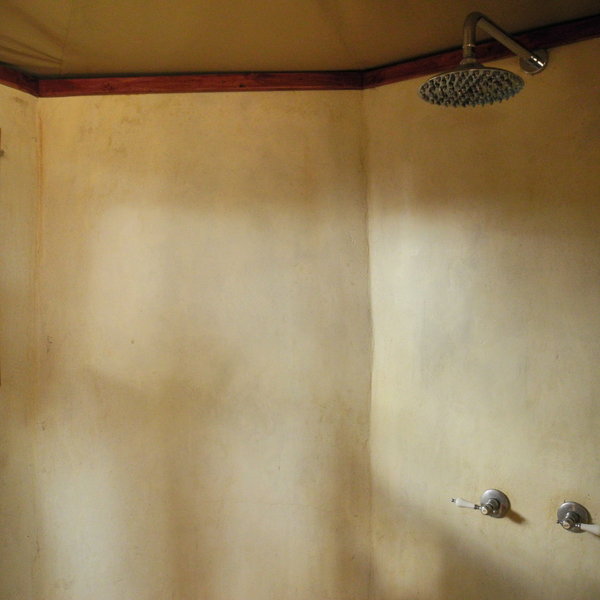
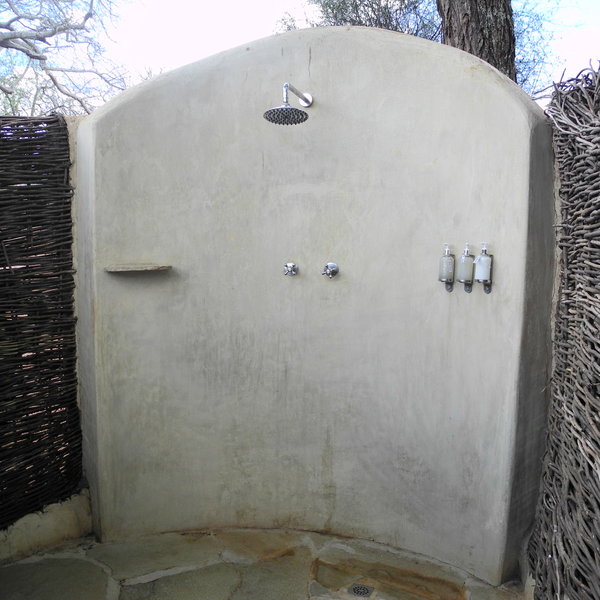
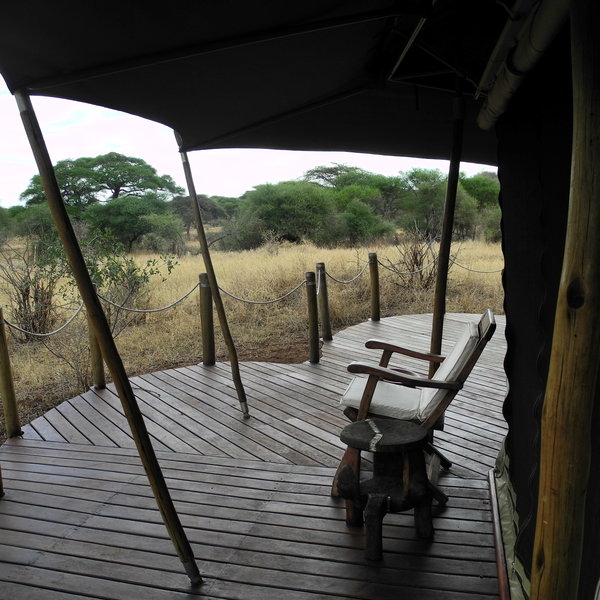
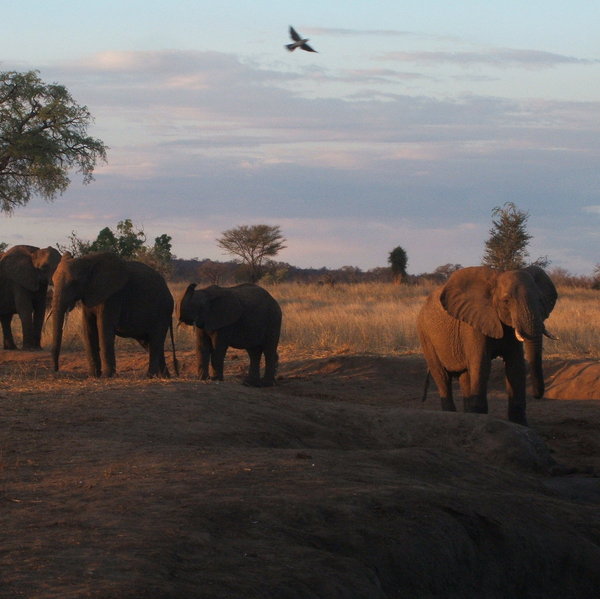
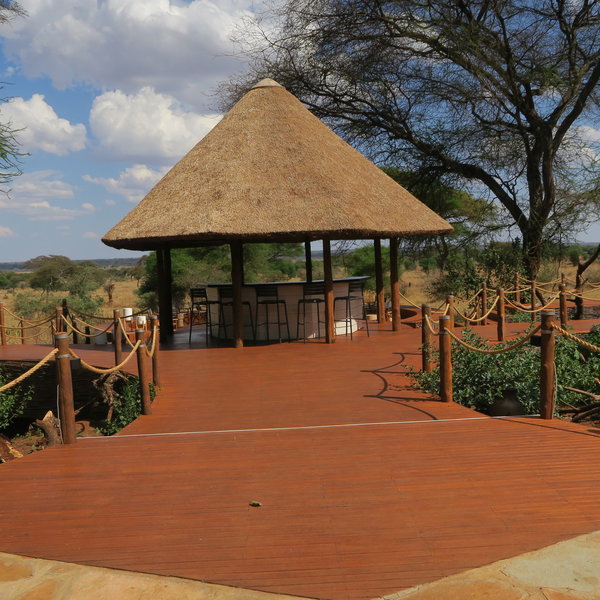
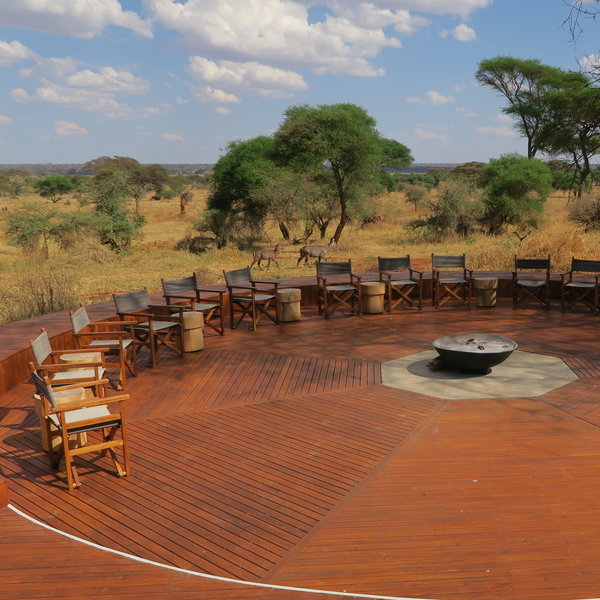
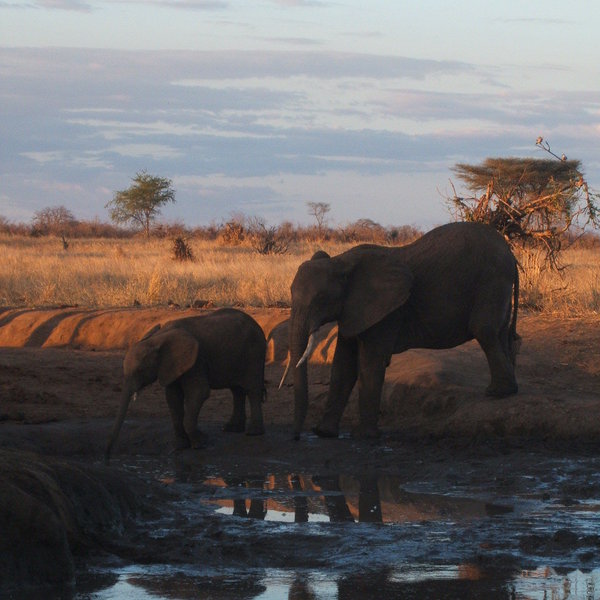
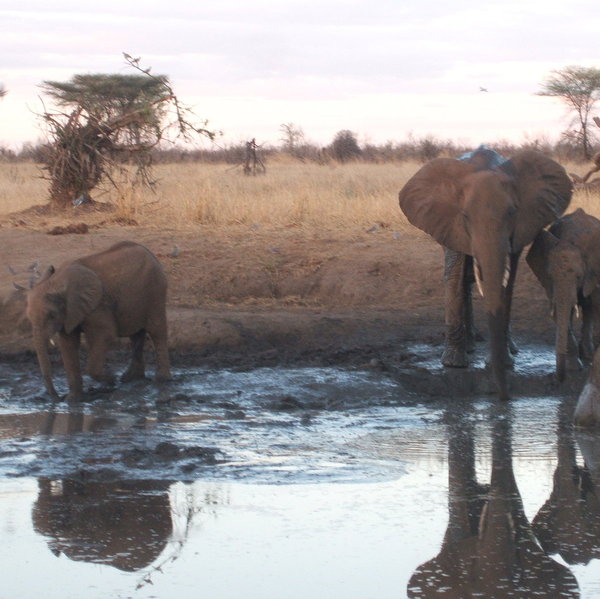
Expert Africa's gallery
When we travel we take lots of photos ourselves to give you a real and un-edited view of the safaris. See our 32 pictures and 1 videos of Swala Camp to get the candid view.
View gallerySwala Camp: Our full report
On the edge of the Gursi Swamp, in the far south-west of Tanzania’s Tarangire National Park, Swala Camp sits ...
... in a quiet area, amid an area of open grassland under a grove of tall Acacia tortillis trees and baobabs. Completely rebuilt in 2009, this permanent tented camp promises high-quality accommodation, with good resident game – impala, elephant and waterbuck that are attracted to its artificial waterhole.
The stylish main communal areas at Swala Camp are raised on wooden platforms under a large baobab tree. Under an open-sided thatched structure, with ochre and white walls, you'll find comfy sofas, coffee tables and armchairs. This area is perfect for cooling off in the heat of the day. Rattan sofas and chairs are dotted around the decking, giving a good view of the passing wildlife. In the evening, pull up a stool at the bar or enjoy drinks and snacks around the camp’s very impressive fire pit.
The dining area is similar in style – open on three sides with a large deck at the front – and its polished wooden floors, black tables with cane high-back chairs and stylish décor give it a contemporary feel. Individual tables are laid out either under cover, or out on the open deck. To the side of the deck there's a pizza oven.
The 12 tented rooms at Swala Camp are located under shady acacia trees and spread along sandy pathways to one side of the main area. All recently refurbished (2018), the canvas tents are raised on wooden platforms, and their elegant style is very much in keeping with that of the main area. They are decorated with neutral tones complemented with bold black stripes and pops of mustard yellow.
Scrubbed white floorboards, white armchairs, and a large white-linen king-size bed swathed in mosquito netting (some rooms also have twin beds) lend a very fresh, simple feel to the rooms at Swala. Above each bed is a ceiling fan, and a reading light.
Behind the bed is the bathroom area, separated by clothes storage space. There are twin basins beneath a large mirror. To one side you'll find the separate toilet, and behind another door is the shower. A door from the indoor shower leads through to a big outdoor rainfall shower – surrounded by wicker fencing for privacy. Africology toiletries are provided, along with bathrobes and slippers.
Each room at Swala Camp has a hairdryer, electronic safe and even a ‘gym in a bag’ containing a yoga mat, jump rope and hand weights. There are also plug sockets for recharging batteries. At the front of each tent is a deck with seating.
Some of the rooms are built around ancient baobab trees and one of them even has an outdoor seat built around the trunk of baobab. You can enter the tents either through the zipped canvas flaps on the front deck, or through lockable doors at the back or the side. Most tents can be set up either as doubles or twins and two can also serve as triples.
Although most guests arrive here with their own driver/guide, Swala Camp has its own two guides and up to four vehicles for guests to use on activities. It's a wildlife-rich area: when we last visited in October 2018 we saw waterbuck grazing in front of the camp and lions and cheetahs are regularly seen around camp. Bush walks and night drives are available here at an extra cost (minimum age: 16).
It is also possible for guests to visit a local village near Mameri, just outside the national park, a 30-minute drive from Swala. The camp also has links with a near-by bee-conservation project that guests are welcome to visit.
Activities
4WD Safari
Birdwatching
Cultural excursion
Guided walking safari
Hot air ballooning
Night drive
Private activities
Families & children
- Attitude towards children
- Swala Camp markets itself as an adult camp.
- Property’s age restrictions
- As a general rule children under 12 are not accepted - although the camp has been known to bend this rule if we ask them well in advance. The absolute minimum age is usually 6.
- Special activities & services
- There are no special activities for children at Swala Camp. The minimum age for walking and night drives is 16.
- Equipment
- There is no special equipment for children.
- Generally recommended for children
- Swala Camp has a sophisticated and adult atmosphere so is not really suitable for children under 12 years.
- Notes
- Children will need to be constantly supervised by their parents as the camp is not fenced in and wildlife wanders freely through the camp day and night.
Food & drink
- Usual board basis
- Full Board
- Food quality
- When we last visited Swala Camp we didn't have time to stay for a meal, but the manager explained that guests could expect the following:
Breakfast is a choice of a fresh fruit, cereals, yoghurts, freshly baked breads and muffins, followed by a cooked-to-order breakfast.
Lunch is a three-course menu served with freshly baked bread. For the main course there is usually a choice of either a vegetable or a meat dish. Many guests will opt to take a boxed lunch out with them.
Dinner is another three-course menu with a starter, a choice of three mains – a vegetarian dish, red or white meat, or fish – served with vegetables, followed by a dessert.
They can be quite flexible about meals, and encourage guests to eat around the fire if they want to. You can also have bush breakfasts and bush lunches with proper sit-down service. Both of these bush meals are charged for, however, as the park authorities charge the camp for them. - Dining style
- Individual Tables
- Dining locations
- Indoor and Outdoor Dining
- Further dining info, including room service
- Room service is possible with advance notice.
- Drinks included
- Most drinks are included apart from premium wines and spirits.
Getting there
- Location
- Tarangire National Park, Tanzania
- Ideal length of stay
- Stay at Swala Camp for at least two nights, possibly three, to explore the great game in Tarangire National Park.
- Directions
- Swala Camp is a 60 minute drive from Kuro airstrip in Tarangire, or a leisurely 2-3 hour game drive from Tarangire's main gate in the north of the park, depending on what wildlife you see en-route.
- Accessible by
- Fly-and-Transfer
Communications
- Power supply notes
- The generator is on for a few hours in the morning and evening. The batteries it charges give power for personal charging to be done in the rooms at any time. Hot water is provided by wood-fired boilers using wood brought in from outside the park. They also use fuel tablets made from recycled waste.
- Communications
- There is WiFi in the rooms at Swala Camp. Cellphone reception is very patchy and can only be received in certain parts of the camp.
- TV & radio
- There is no TV at Swala Camp.
- Water supply
- Borehole
- Water supply notes
- For cooking and drinking, all water is brought in and Sanctuary water bottles are supplied to guests.
Health & safety
- Malarial protection recommended
- Yes
- Medical care
- There is a trauma kit at Swala Camp as well as a first-aid kit, and both managers and two staff are first-aid trained. For serious emergencies they would drive you to Kuro airstrip for a flight to Arusha where there are full medical facilities.
- Dangerous animals
- High Risk
- Security measures
- They have three askaris (Maasai guards) patrolling at night, and a TANAPA ranger is permanently based in the camp.
- Fire safety
- There are fire extinguishers in all the rooms and the main areas.
Useful info
- Disabled access
- On Request
- Laundry facilities
- A laundry service is included: clothes are handwashed and line-dried. As with most camps in Tanzania, female underwear is not accepted and washing powder is provided in the rooms for guests to wash these themselves.
- Money
- There are safes in all the rooms at Swala Camp. They can normally exchange a very small amount of Tanzanian shillings, but only if really needed.
- Accepted payment on location
- Swala currently accepts MasterCard and Visa with a surcharge of 5.8%. They accept cash payments in pounds, US dollars, euros and Tanzanian shillings.
Plan and book your trip with Expert Africa
All of our trips are tailor-made, so we'll always adapt them to suit you. Talk to an Expert and let us plan and arrange your perfect trip.

Talk to an Expert
Call or email us now! We’ll match you with the Specialist in our team who is best suited to help you. Then together we can start planning your trip.

Set up your itinerary
Based on our experience and your ideas, your specialist will create a detailed, costed itinerary. We’ll refine it together, until we have a trip that you’re perfectly happy with.

Prepare for your trip
The same Specialist will make the seamless arrangements for your trip, send you detailed travel documents, and be available to answer any questions before you depart.

Travel with peace of mind
After you set off, you’ll be cared for by our partners in Africa, most of whom have worked with Expert Africa for decades. And if you ever need us urgently, we’re available 24/7.

When you return
We love to learn about your trip, and so will always be grateful if you’ve the time to give feedback to your Specialist when you return.
Swala Camp's location
Look closer at the environment and surroundings of Swala Camp.
Excursions from Swala Camp
Optional extra day-trips and excursions possible whilst you're staying at Swala Camp. Talk to us: these are usually best arranged before you go.
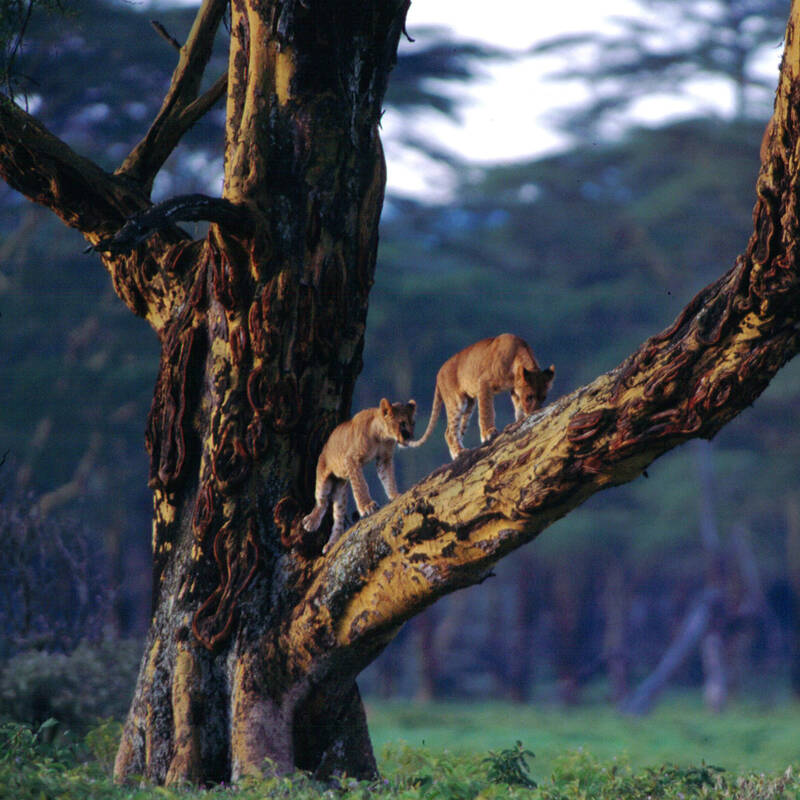
Lake Manyara Safari
Half-day or full-day
Set against the spectacular backdrop of the Rift Valley escarpment, Lake Manyara National Park makes a great safari destination. Here, along with elephant herds and plains game, you’ll find jungle-like forests that are home to blue monkeys, a soda lake tinged pink by flamingos and some of Tanzania’s best birding.
More about Lake Manyara Safari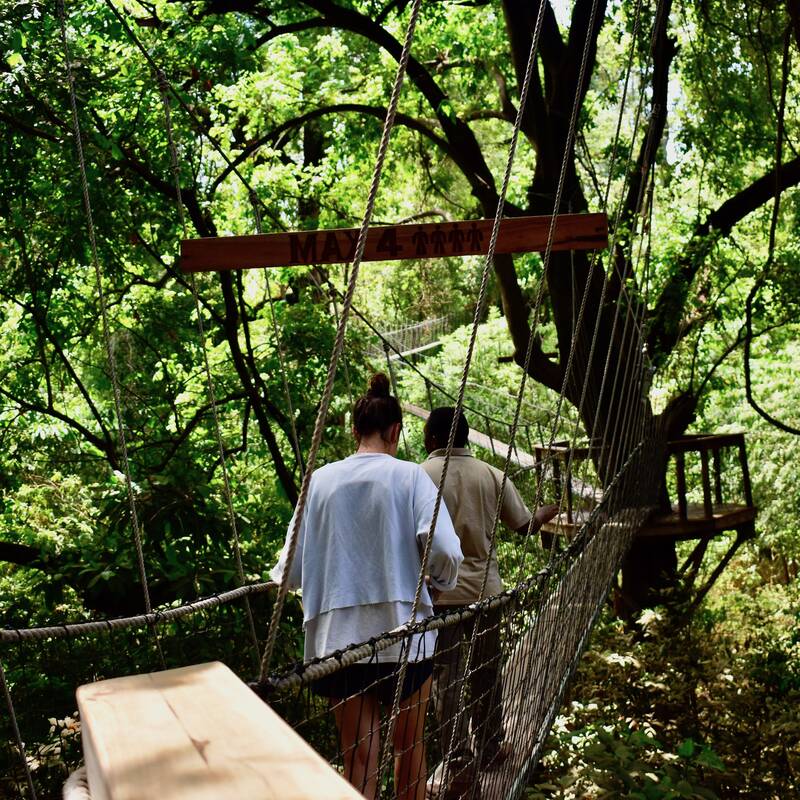
Lake Manyara Treetop Walkway
Usually one hour
Experience the forest of Lake Manyara National Park from a whole new perspective – high up in the trees. The first suspended walkway in Tanzania, it stretches underneath the canopy for 370m between the mahogany and fig trees, giving intrepid visitors a unique view of the surrounding flora and fauna.
More about Manyara Treetop WalkOther lodges in Tarangire National Park
Alternative places to stay in this same area.
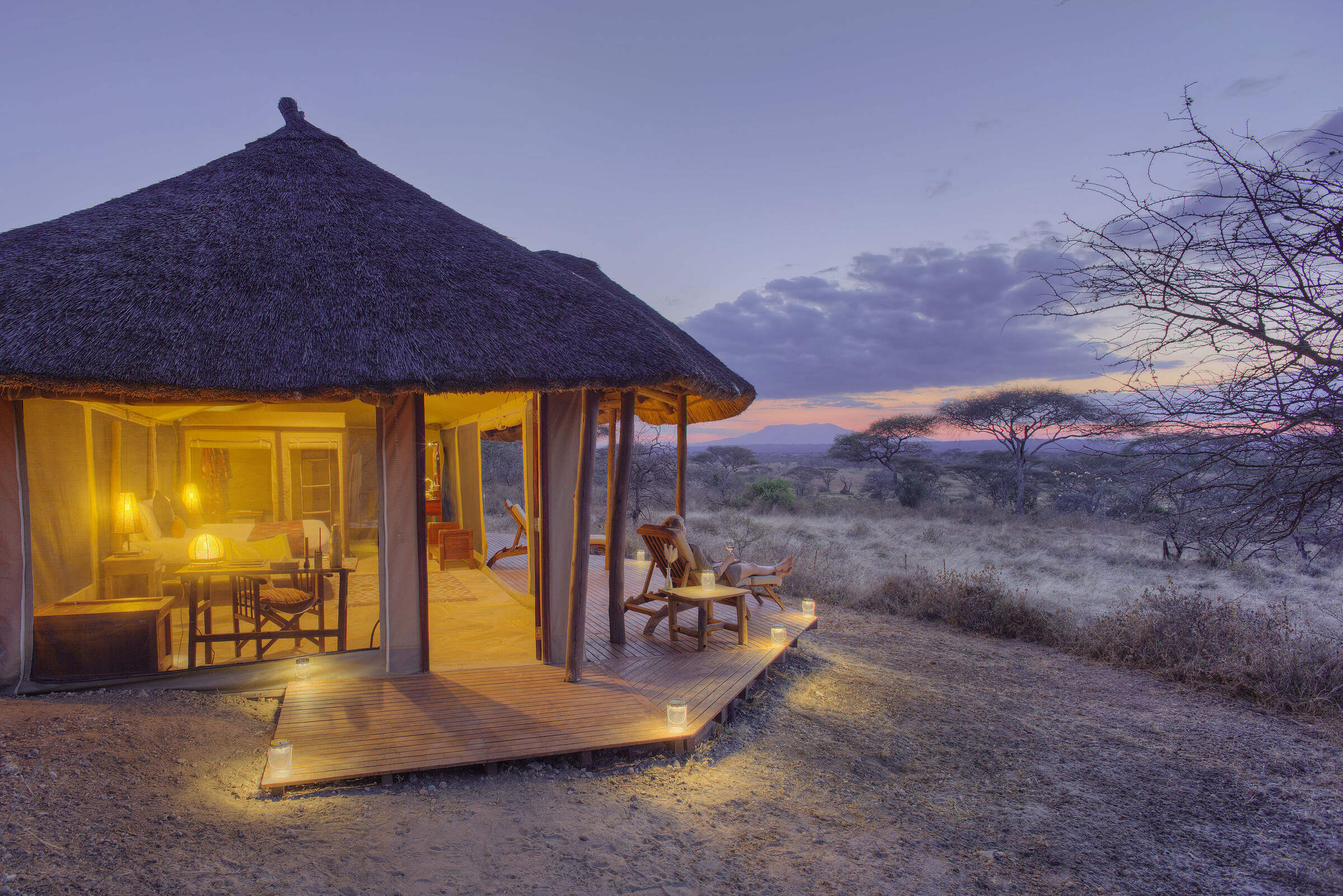
Oliver's Camp
Oliver's Camp is a small, intimate, luxury tented camp in a great location in northern Tanzania's Tarangire National Park.
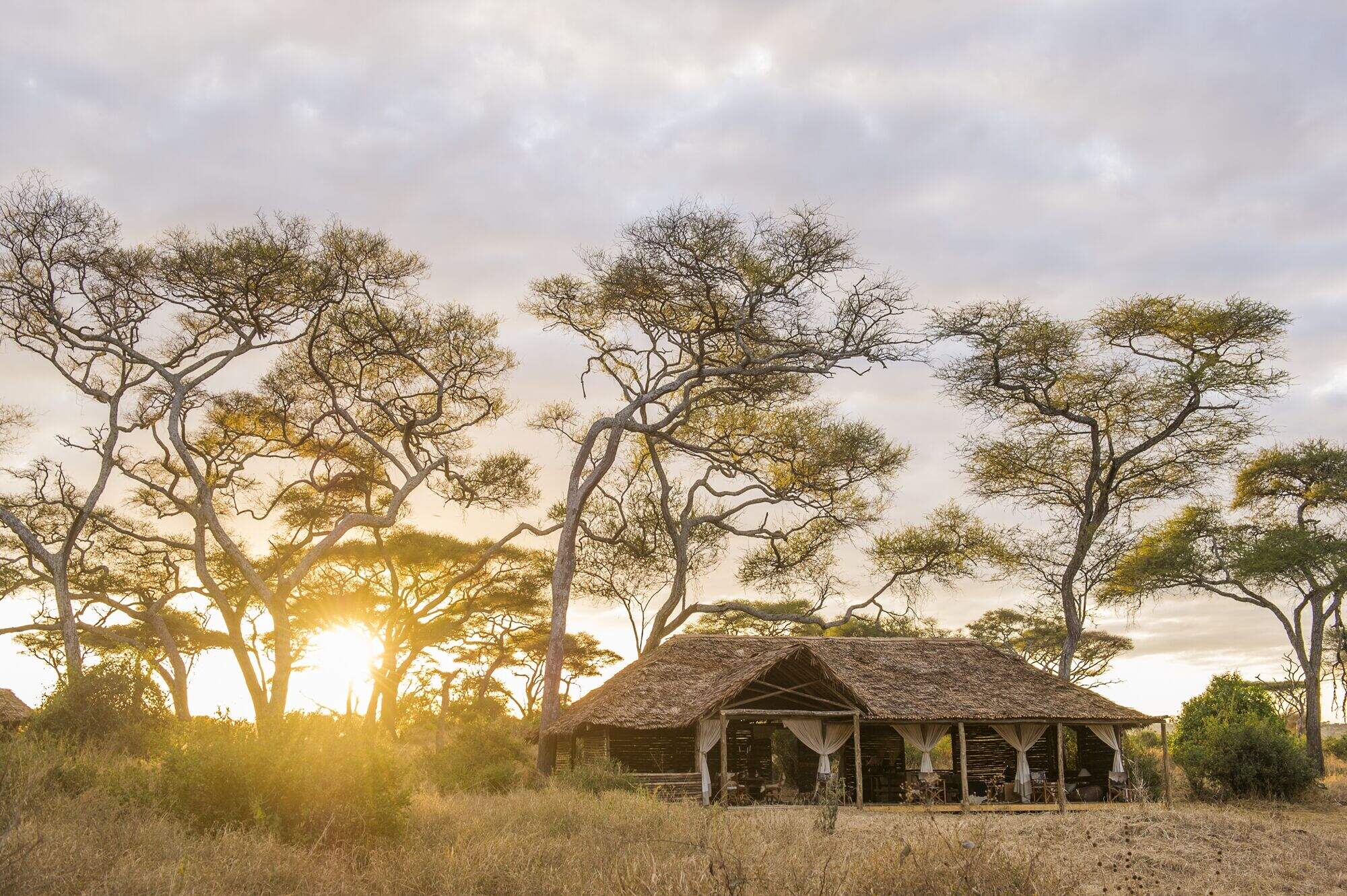
Kuro Tarangire
Kuro Tarangire is a stylish tented camp, located in a quiet and remote area deep in Tarangire National Park.
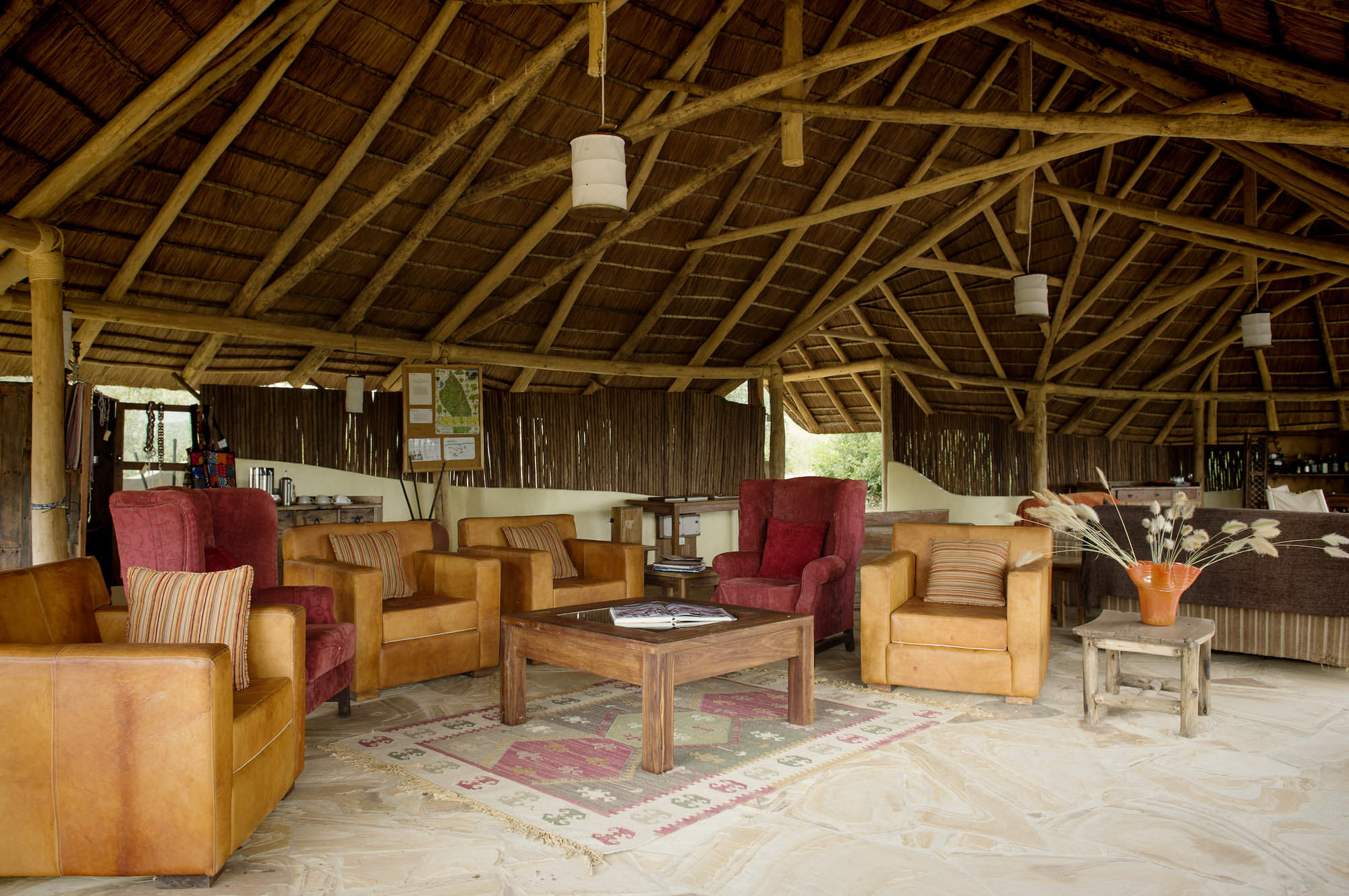
Little Oliver's
For a more private version of its sister property, Oliver’s Camp, Little Oliver’s offers high-quality guiding and tented rooms.
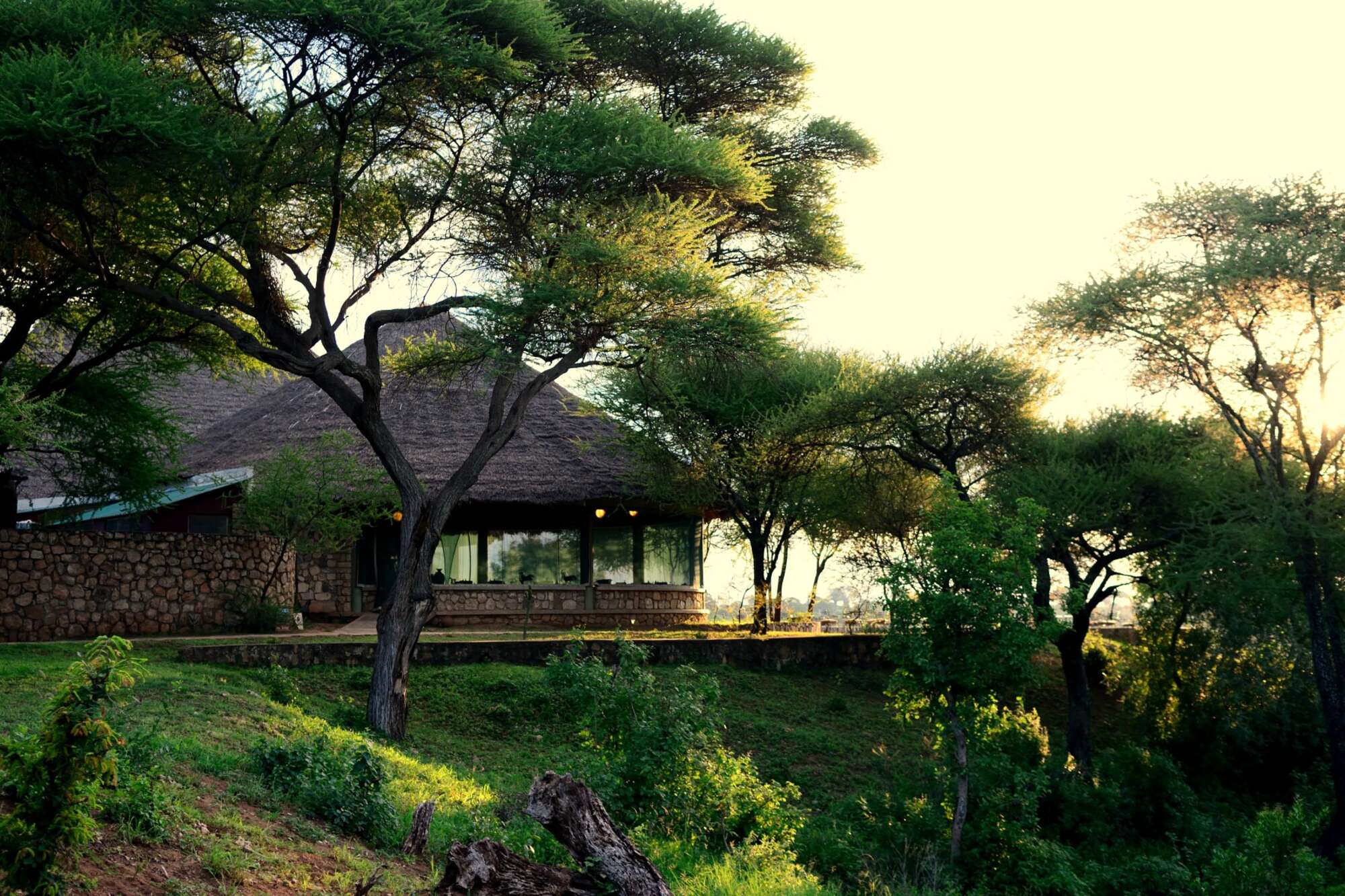
Tarangire Safari
Functional Tarangire Safari Lodge is one of Tarangire National Park's larger lodges, on a prime central site overlooking the river.
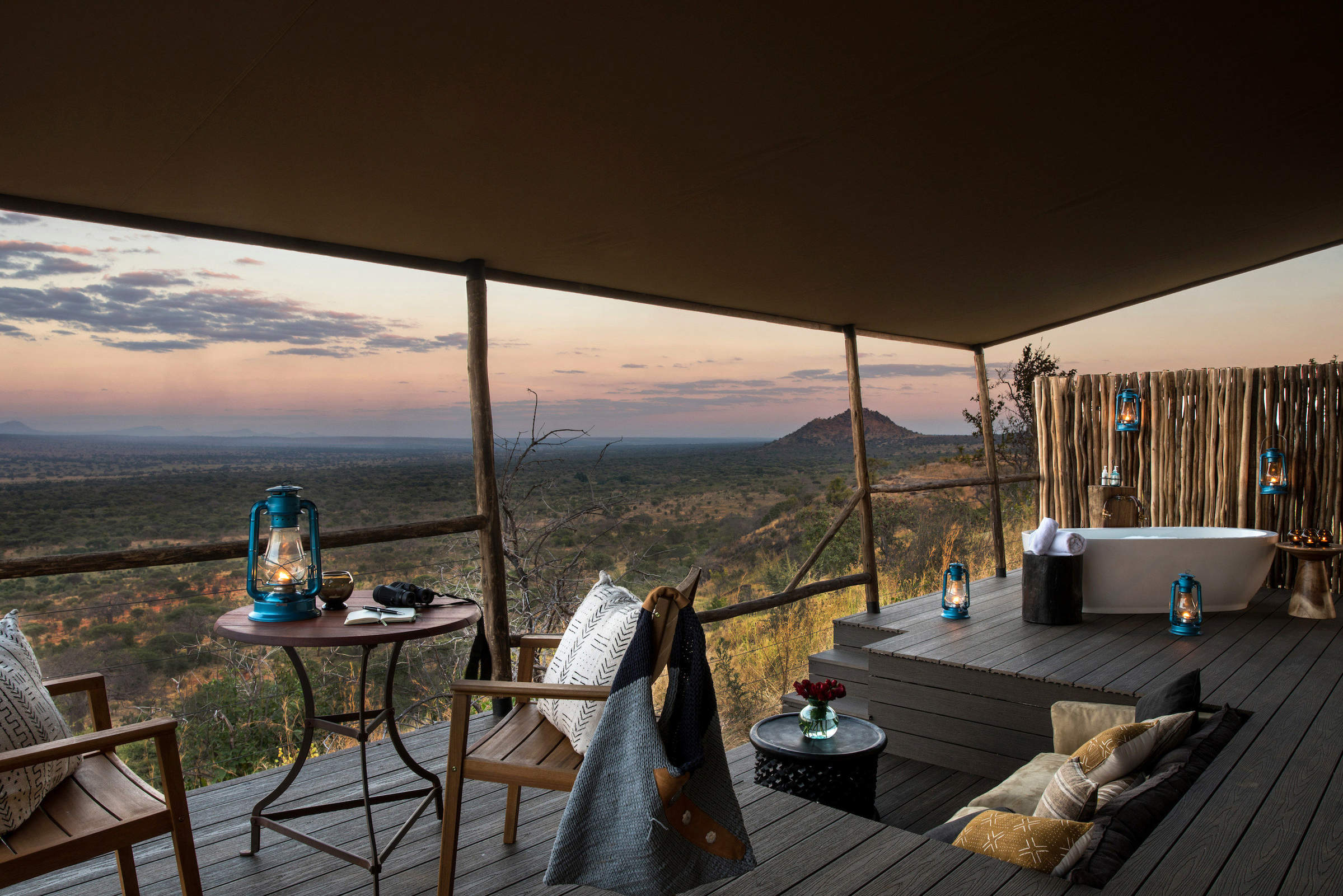
Lemala Mpingo Ridge
Lemala Mpingo Ridge is a stylish camp in Tarangire National Park, with a beautiful location and elevated views over the park.
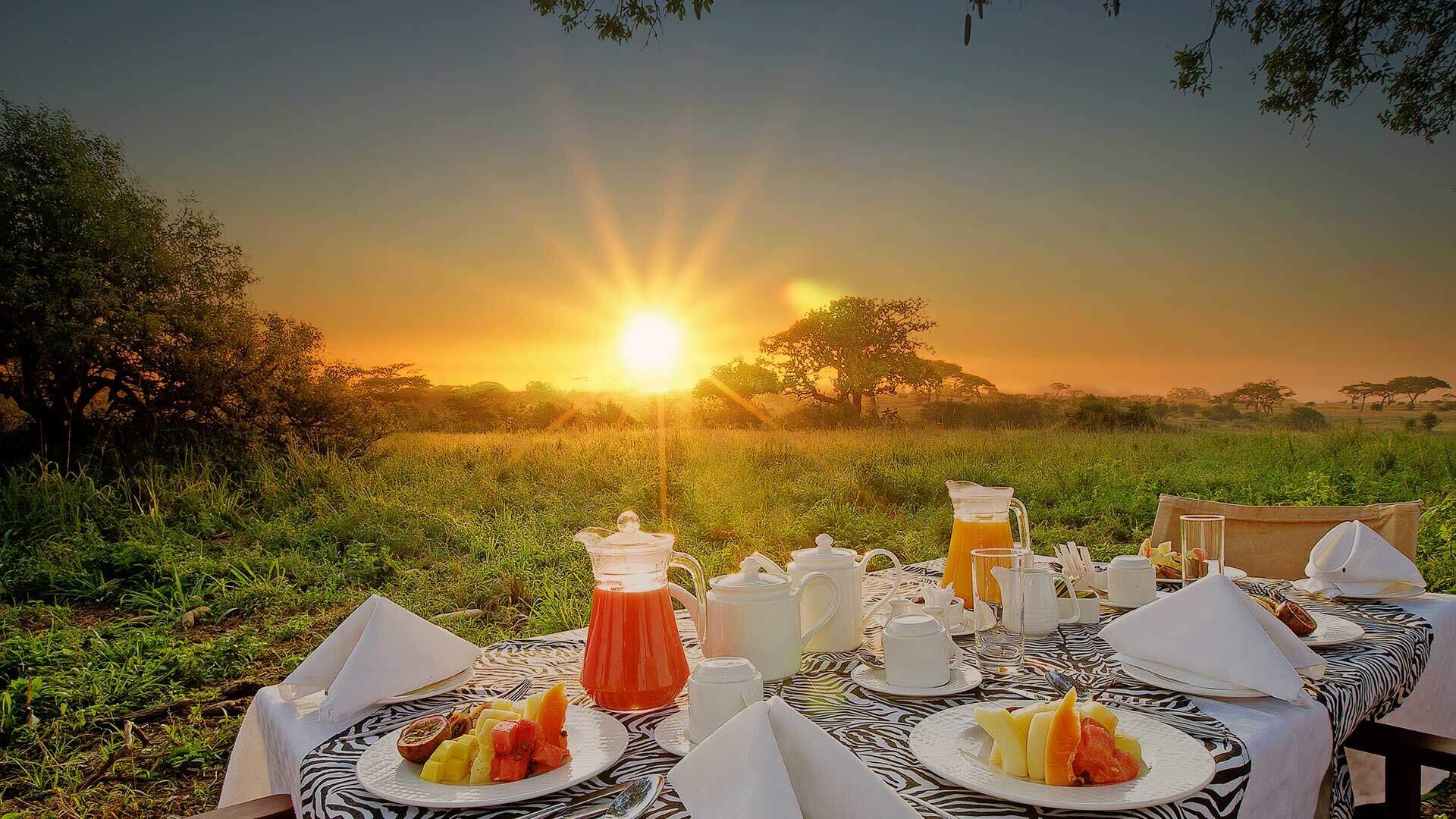
Tarangire Sopa Lodge
Tarangire Sopa Lodge is a large, comfortable, family-friendly hotel in Tarangire National Park, suitable for travellers on a budget.

Tarangire Treetops
Tarangire Treetops is a lovely, high-quality lodge on the outskirts of Tarangire National Park, offering game drives, night drives and safari walks.
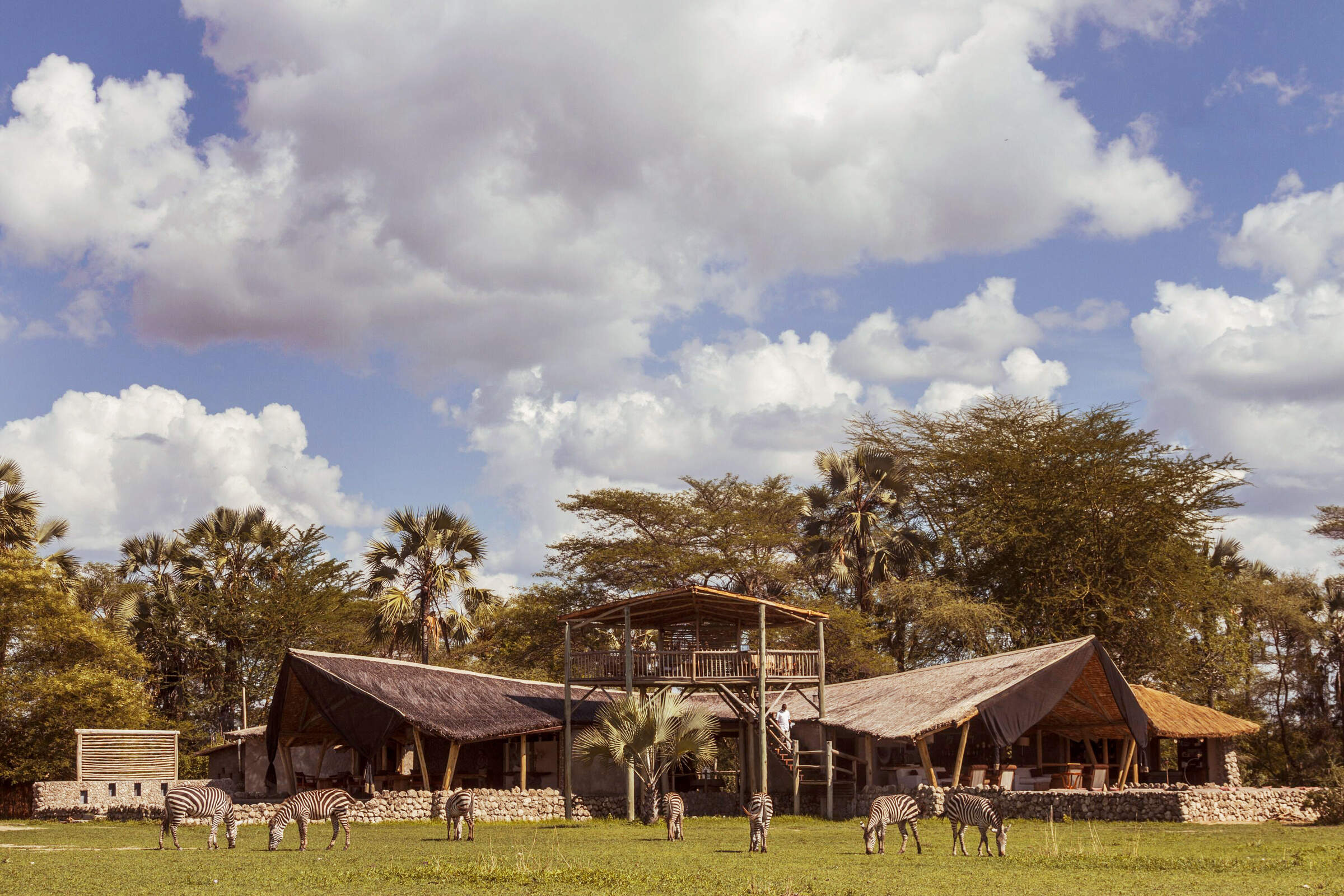
Chem Chem
Chem Chem is a luxury tented lodge on a private concession between Lake Manyara and Tarangire national parks.
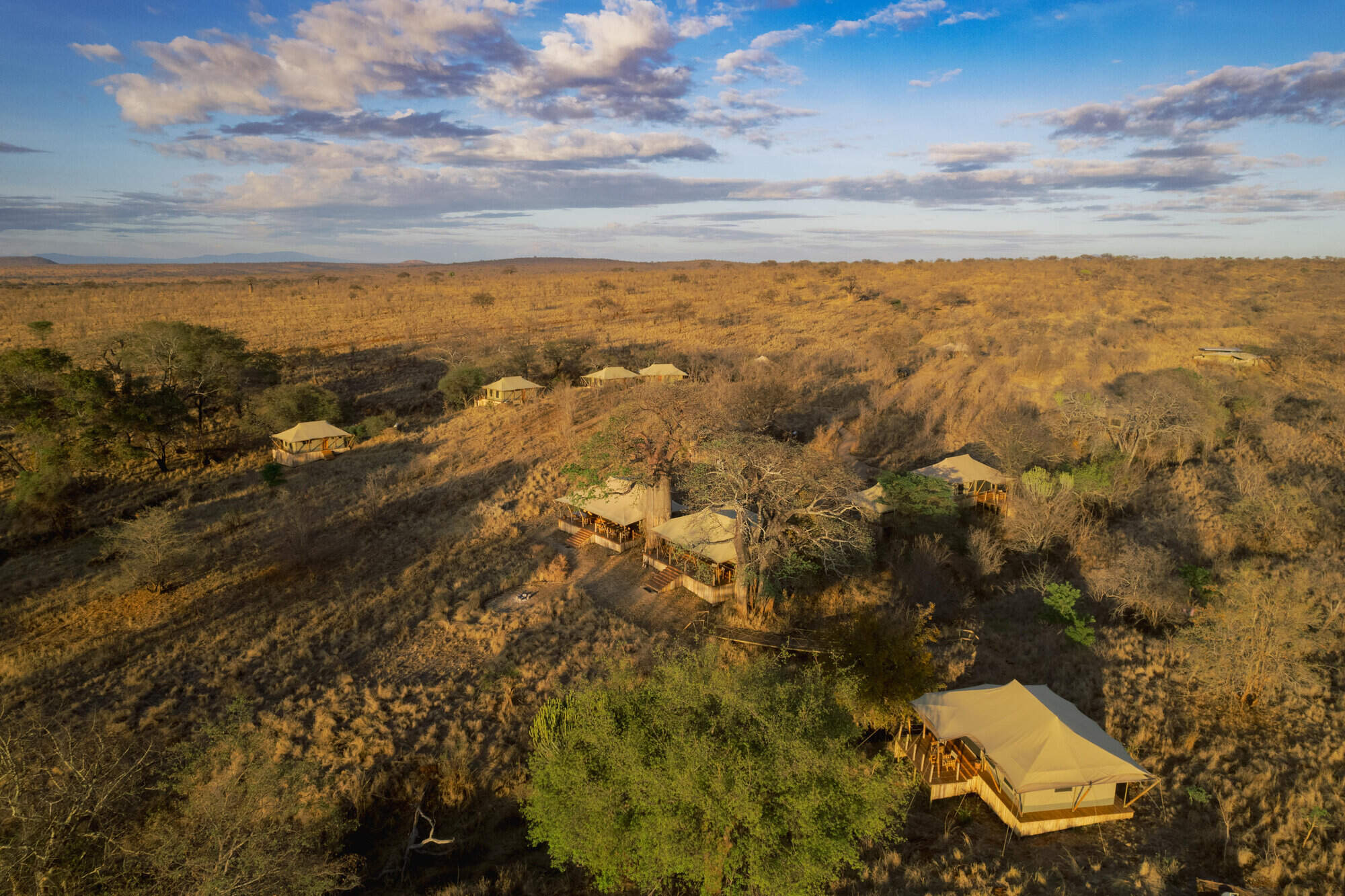
Olkeri Camp
Olkeri is a comfortable tented camp, located in the Randilen Wildlife Management area, bordering Tarangire National Park; ideal for those looking for pristine wilderness.
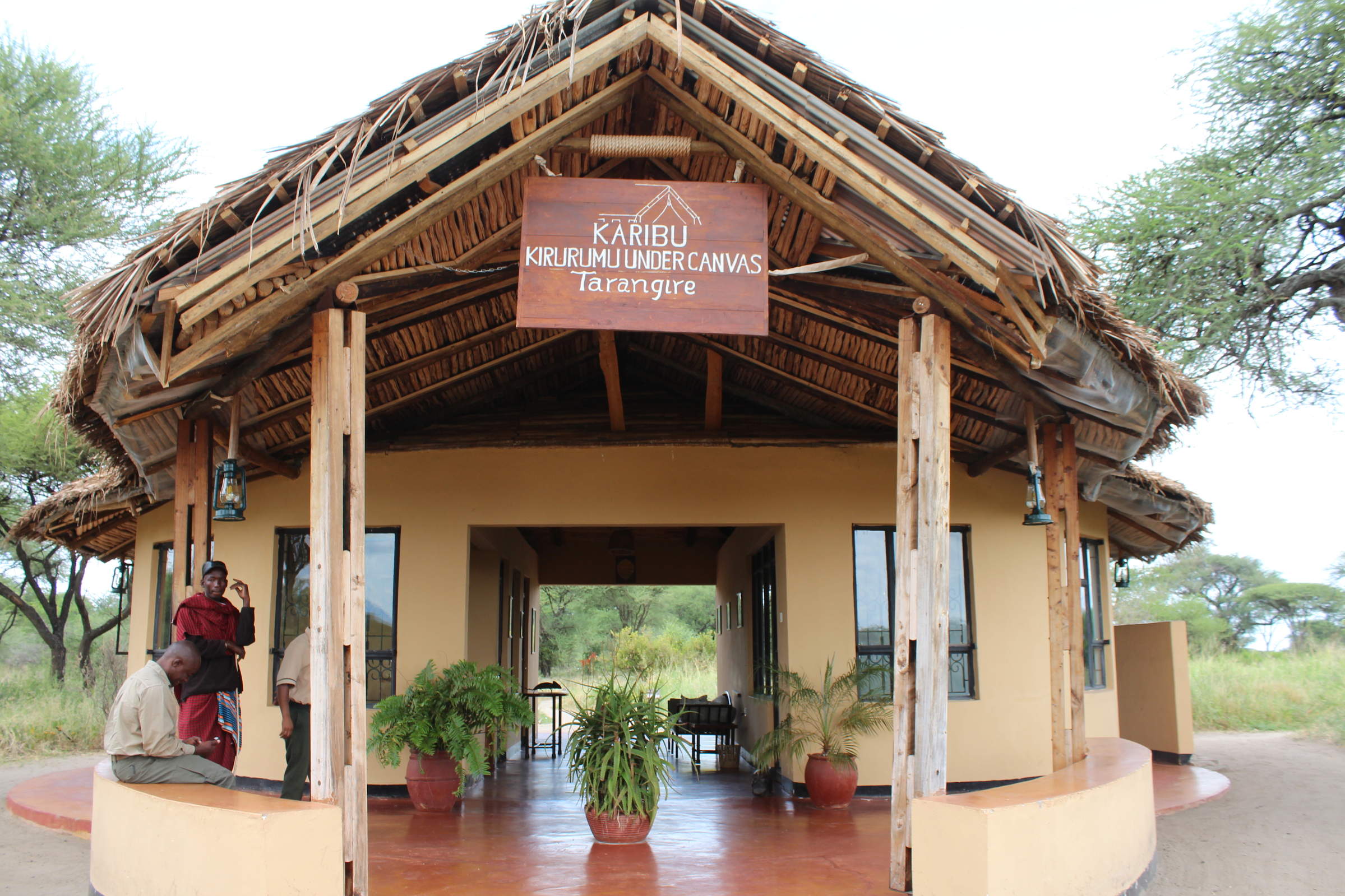
Kirurumu Tarangire
Kirurumu Tarangire Lodge is a simple, small, tented camp positioned just outside the northern boundary of Tarangire National Park.
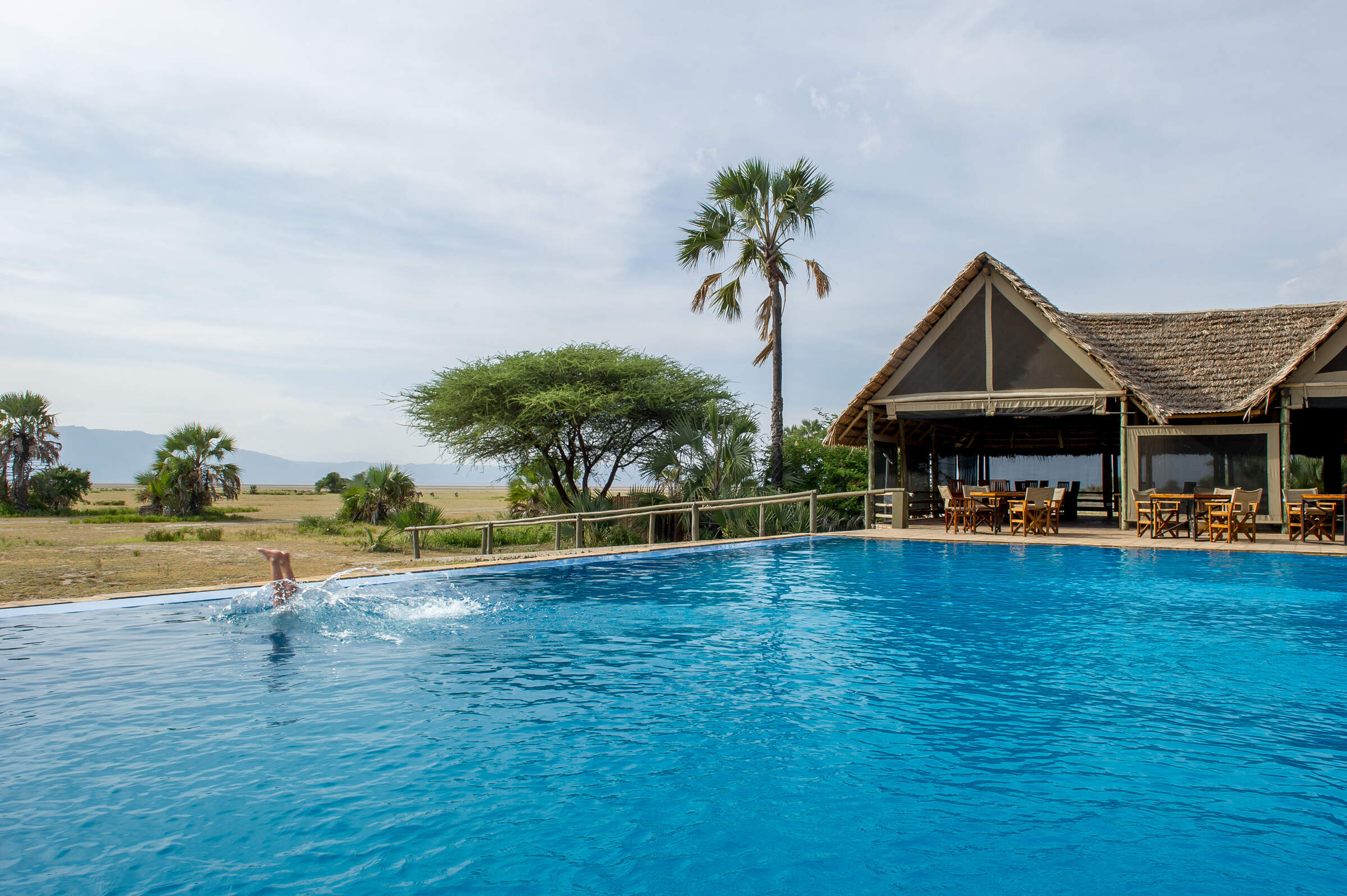
Maramboi Tented Camp
Maramboi Tented Camp is a family-friendly tented lodge located between Lake Manyara and Tarangire National Park.
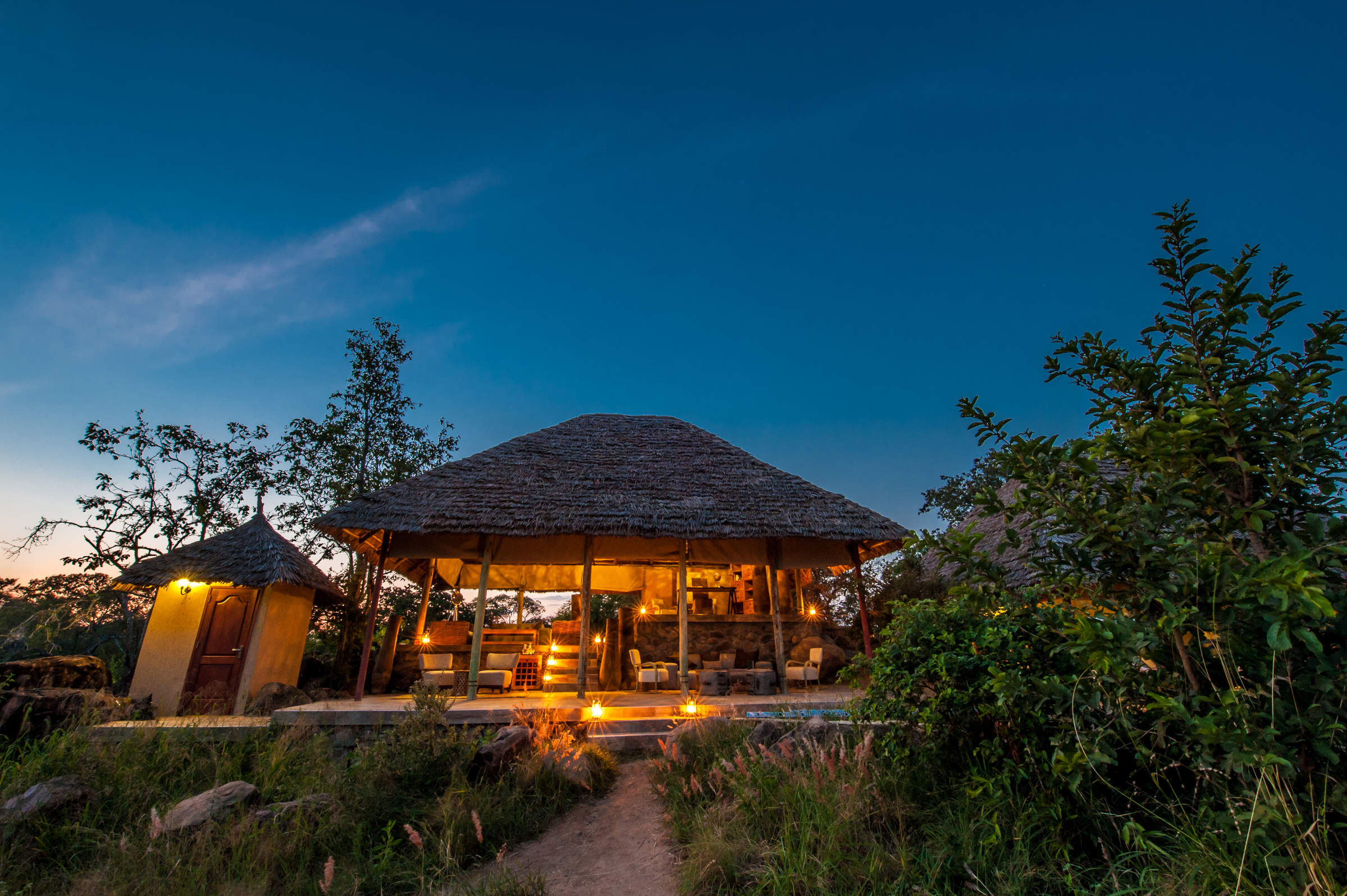
Nimali Tarangire
Nimali is a small camp built in contemporary style on the outskirts of Tarangire National Park in northern Tanzania.
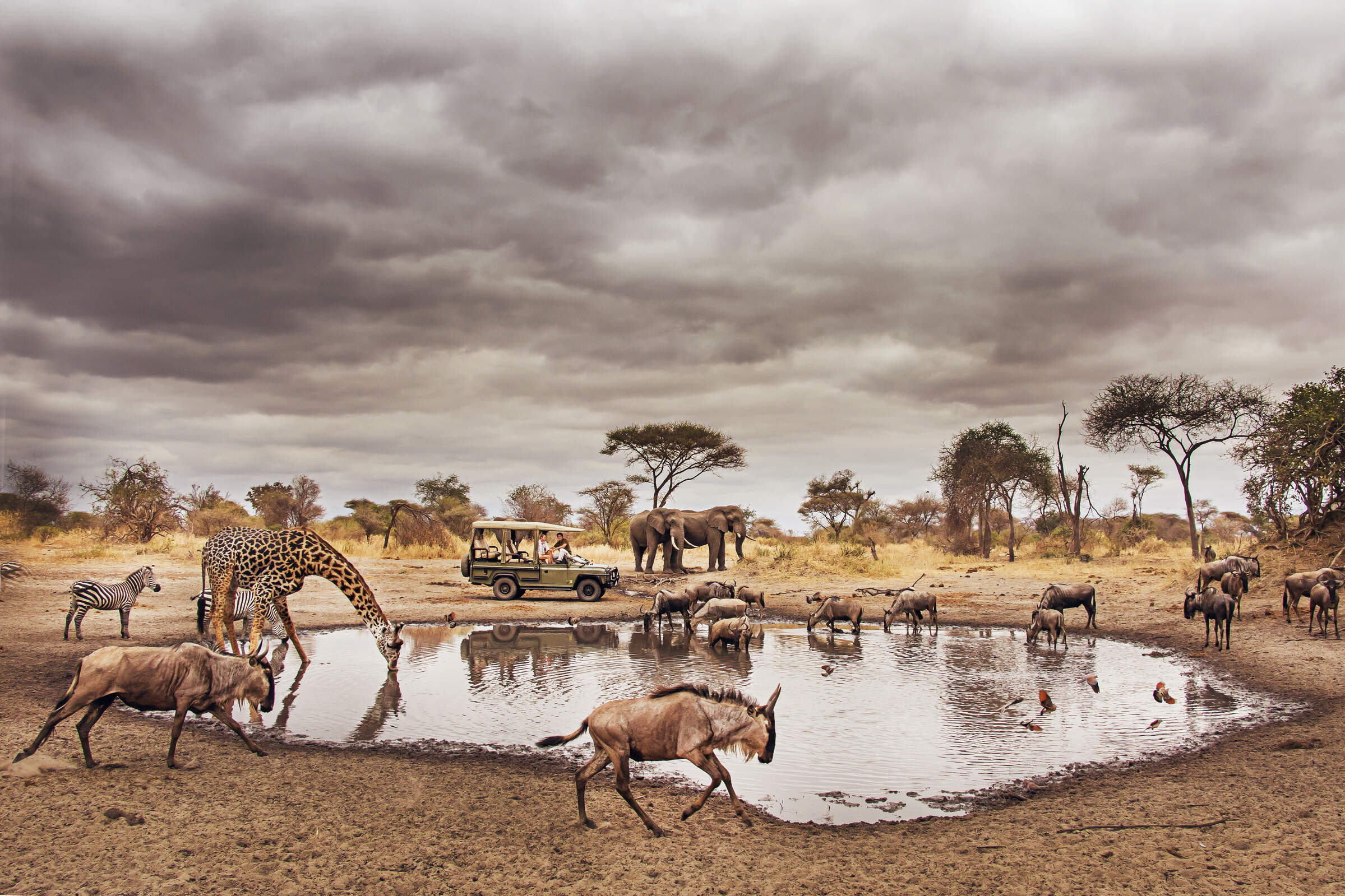
Forest Chem Chem
Located in the Chem Chem Concession and close to Tarangire National Park, Forest Chem Chem is a high-quality tented camp which is booked on an exclusive basis.
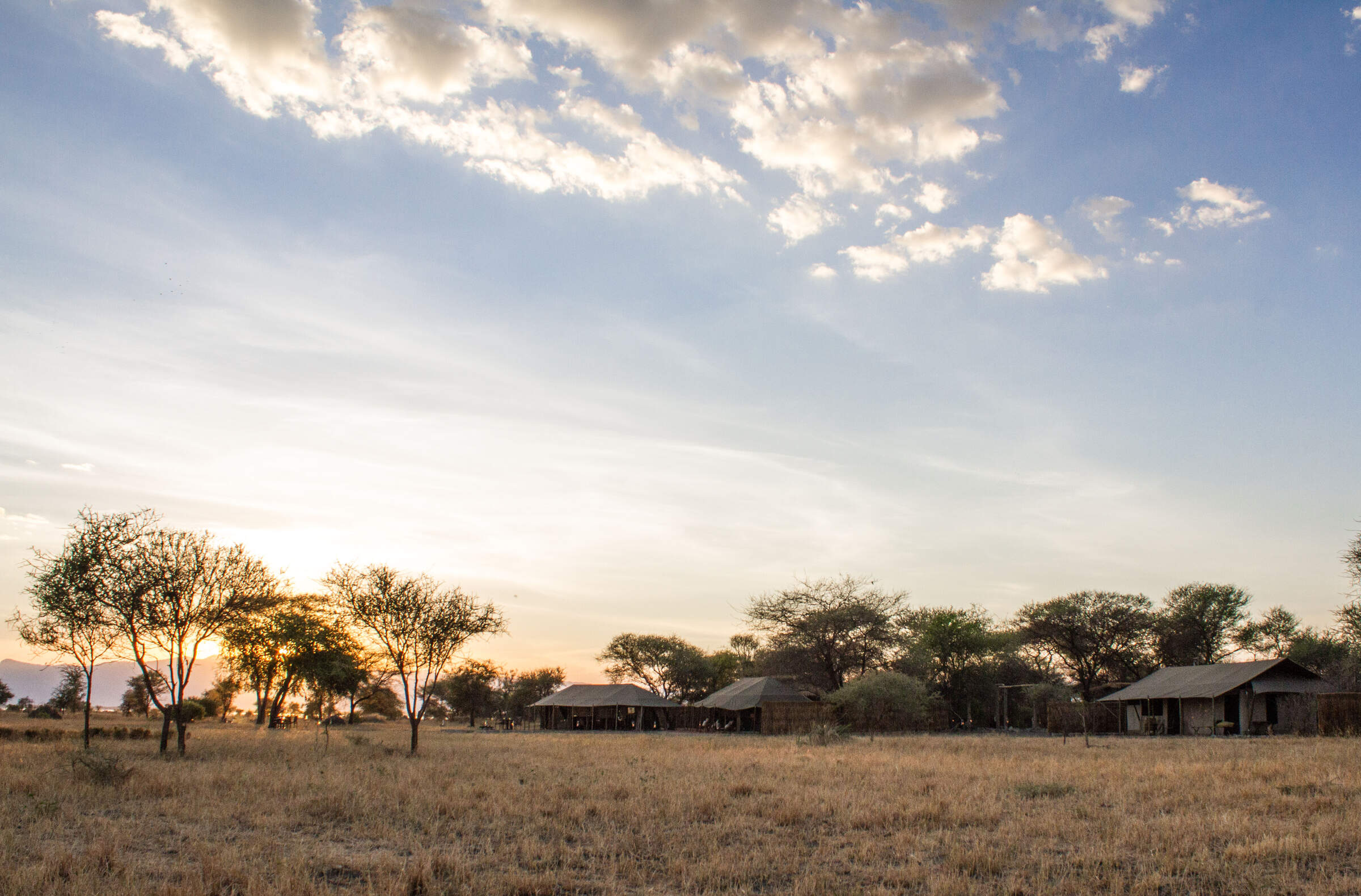
Little Chem Chem
Little Chem Chem is a stylish option near Tarangire National Park, offering real relaxation combined with a variety of safari activities.
When to go to Tarangire National Park
Our month by month guide: What it's like to visit Swala Camp in Tarangire National Park
Jan
Feb
Mar
Apr
May
Jun
Jul
Aug
Sep
Oct
Nov
Dec
Tarangire National Park in January
January marks the start of the short dry season. The Tarangire River becomes a crucial water source, attracting diverse wildlife. Elephants, buffaloes, and zebras congregate around the river and swamps. The iconic baobab trees stand out against the landscape, providing food and shelter for animals. Birdwatching is excellent as resident birds display breeding plumage and migrant species are present.
The Silale and Gurusi swamps teem with hippos and crocodiles. While the southern areas of the park may still be wet, the northern regions offer great game viewing. The Matete Woodlands provide opportunities to spot leopards and rare fringe-eared oryx antelopes. January can offer great value for visitors, with quieter park conditions and variable weather.
- Variable weather, dry or rainy periods
- Good for birding, many migrant species present
- Elephant herds gather near Tarangire River
- Lush landscapes ideal for photography
- Quieter after early January rush
Our view
A good time to visit, with pros & cons
Weather in January
Tarangire National Park in February
February in Tarangire National Park is one of the hottest months, with temperatures reaching around 33°C/91°F. The short dry season continues, making it an excellent time for wildlife viewing. The Tarangire River and surrounding swamps become focal points for animal activity. Large herds of elephants, numbering over 3,000, are a major attraction.
The north offers impressive vegetation and birdlife, including large flocks of red-billed quelea birds and various raptors. Birdwatchers will enjoy the park's 550+ species, with northern hemisphere migrants joining resident birds. February is lovely for ballooning, offering unique aerial views of the park's diverse landscapes and wildlife during the cooler morning hours.
- Hot and dry weather prevails
- Large elephant herds visible near water sources
- Excellent time for game drives and safaris
- Baobab trees stand out in dry landscape
- Park less crowded, better wildlife viewing
Our view
A very good time to visit
Weather in February
Tarangire National Park in March
As March arrives in Tarangire, the long rains begin, transforming the landscape. This is an important time for the park's famous baobab trees, which store water in their trunks. While game viewing becomes more challenging due to dispersing wildlife, it's an excellent time for photography as the scenery turns lush and green.
The Tarangire ecosystem, including granitic ridges and river valleys, offers stunning views of the Great Rift Valley. Birdwatching remains rewarding, especially in the swampy floodplains and woodlands. March remains challenging for guided walking safaris, as the vegetation is high and thick.
- Hot with increasing humidity before rains
- Wildlife viewing varies as rains approach
- Quiet park with lower visitor numbers
- Migratory birds still present in good numbers
- Balloon safaris offer stunning aerial views
Our view
A good time to visit, with pros & cons
Weather in March
Tarangire National Park in April
April is the wettest month in Tarangire, with an average of 250mm of rain. The park's landscape is at its lushest, with flowering plants attracting insects and smaller animals. While big game viewing is more challenging due to dense vegetation, it's an excellent time for photographers to capture the vibrant scenery. The Tarangire River and swamps swell, creating picturesque scenes.
Birdwatching remains exceptional, with over 550 species present in the park. Visitor numbers are low, providing a more intimate safari experience.
- Heavy rains with impressive thunderstorms
- Some camps closed due to weather conditions
- Lowest rates and very few other tourists
- Lush green landscape, but wildlife dispersed
- Birdwatching excellent for resident species
Our view
This is not a great time to visit
Weather in April
Tarangire National Park in May
As May progresses in Tarangire, the long rains begin to taper off. The park's diverse habitats, from woodlands to savannahs, are lush and green. While wildlife viewing can still be challenging due to high grass, patient observers may spot leopards in the Matete Woodlands. The swamps, including Silale and Gurusi, are full of water, attracting numerous bird species.
May is an excellent time for photography, with dramatic skies and verdant landscapes. The Tarangire ecosystem is at its most vibrant, showcasing the park's stunning biodiversity. Visitor numbers remain low, offering peaceful game drives. Cultural visits to nearby Maasai communities provide insights into local traditions and lifestyles.
- Rains continue, creating dramatic skies
- Quiet time to visit, avoiding crowds
- Park lush and green with high grass
- Wildlife more dispersed, fewer sightings
- Affordable rates for budget-conscious visitors
Our view
This is not a great time to visit
Weather in May
Tarangire National Park in June
June marks the beginning of the dry season in Tarangire. As the landscape starts to dry, wildlife begins to congregate around permanent water sources. The famous Tarangire River becomes a hub of animal activity, attracting diverse species. Elephant herds become more visible as they move towards reliable water supplies.
June is an excellent time for birdwatching, with over 550 species present in the park. The Lemiyon Triangle in the north offers impressive vegetation and birdlife. As the grass starts to shorten, game viewing improves, especially along the Birungi Circuit. June is lovely for balloon safaris, providing breathtaking views of the awakening landscape and wildlife below.
- Weather transitions from wet to dry
- Wildlife starts concentrating near water
- Park still green with some high grasses
- Visitor numbers increasing gradually
- Good value with shoulder season prices
Our view
A good time to visit, with pros & cons
Weather in June
Tarangire National Park in July
July is a prime month for wildlife viewing in Tarangire. As the dry season progresses, large herds of elephants, buffaloes and zebras gather around the Tarangire River and swamps. The park's famous baobab trees stand out against the increasingly arid landscape. Game drives along the Birungi Circuit offer excellent opportunities to spot lesser kudu and massive elands.
Birdwatching remains rewarding, especially around the park's swamps and woodlands. The Matete Woodlands provide good chances to see leopards and rare fringe-eared oryx antelopes. July is perfect for photography, with clear skies and animals congregating at water sources. Guided nature walks provide intimate encounters with the park's flora and fauna. Sundowner game drives offer magical experiences as the African sun sets over the savannah.
- Dry season begins, excellent wildlife viewing
- Large elephant herds visible near river
- Popular time with higher visitor numbers
- Peak prices due to optimal conditions
- Guided walks offer intimate wildlife experiences
Our view
Fantastic: the very best time to visit
Weather in July
Tarangire National Park in August
August in Tarangire offers exceptional wildlife viewing opportunities. The dry season is in full swing, concentrating animals around the Tarangire River and remaining water sources. Large elephant herds, sometimes numbering in the hundreds, are a common sight. The park's swamps, including Silale and Gurusi, attract diverse wildlife.
Birdwatching is excellent, with many species gathering around water bodies. The iconic baobab trees provide a striking backdrop for photography. August is ideal for balloon safaris, offering panoramic views of the park's diverse landscapes and wildlife. Guided nature walks provide intimate encounters with the park's flora and fauna. Cultural visits to nearby Maasai communities offer insights into traditional lifestyles.
- Dry conditions, animals gather at water sources
- Excellent general wildlife viewing
- Busy season with higher visitor numbers
- Swamps attract diverse wildlife species
- Night drives reveal nocturnal animals
Our view
Fantastic: the very best time to visit
Weather in August
Tarangire National Park in September
September is an excellent month to visit Tarangire. As the dry season peaks, wildlife concentrates around remaining water sources, particularly the Tarangire River. Large herds of elephants, wildebeests, and zebras offer spectacular viewing opportunities. The Matete Woodlands and Birungi Circuit provide chances to spot predators like leopards. Birdwatching remains rewarding, with over 550 species in the park.
The landscape, dotted with iconic baobab trees, offers stunning photographic opportunities. September is ideal for guided walking safaris, allowing visitors to explore the park's ecosystem up close. Balloon safaris provide breathtaking aerial views of the parched landscape and congregating wildlife.
- Fantastic wildlife viewing opportunities
- Parks becoming very dry, animals congregate
- Slightly quieter than peak August period
- Baobab trees in full leaf, great for photos
- Higher chances of seeing large predators
Our view
Fantastic: the very best time to visit
Weather in September
Tarangire National Park in October
October in Tarangire marks the end of the dry season, offering some of the best wildlife viewing opportunities. The Tarangire River and surrounding swamps become crucial for survival, attracting large concentrations of animals. Elephant herds are particularly impressive during this time. The park's famous baobab trees stand out against the parched landscape. Birdwatching is excellent, with many species congregating around remaining water sources.
October is ideal for photography, with clear skies and abundant wildlife. Balloon safaris provide stunning aerial views of the park's varied landscapes and wildlife. As the month progresses, there's a chance of early rains, bringing new life to the park.
- Mostly dry with comfortable temperatures
- Excellent game viewing around water sources
- Lower visitor numbers than earlier months
- Balloon safaris offer breathtaking views
Our view
A very good time to visit
Weather in October
Tarangire National Park in November
November in Tarangire sees the start of the short rains, transforming the landscape. The famous baobab trees begin to flower, creating a lush backdrop. Wildlife starts to disperse as water becomes more widely available, but game viewing remains good. The Tarangire River and swamps continue to attract diverse species. November is excellent for birdwatching as migratory birds arrive, joining the park's 550+ resident species.
As the vegetation greens, photography opportunities abound. Guided nature walks provide insights into the park's changing ecosystem. Cultural visits to nearby Maasai communities offer unique experiences. November can offer great value with shoulder season rates and fewer visitors.
- Variable weather, chance of rain increasing
- Parks quieter, prices more affordable
- Wildlife disperses as rains begin
- Migratory birds start arriving in the park
- Green season begins, landscape transforms
Our view
A good time to visit, with pros & cons
Weather in November
Tarangire National Park in December
December in Tarangire brings a mix of wet and dry conditions. The short rains continue, rejuvenating the landscape. The famous baobab trees are in full leaf, providing shade and food for wildlife. While animals are more dispersed than in the dry season, game viewing remains rewarding. The Tarangire River and swamps continue to attract diverse species.
December is excellent for birdwatching, with migratory birds present alongside resident species. Balloon safaris provide stunning views of the greening landscape. Cultural visits to nearby communities offer insights into local holiday traditions. Despite being a popular time for visitors, especially during the festive season, December can still offer peaceful safari experiences in less-visited areas of the park.
- Variable weather, mix of dry and rainy days
- Good game viewing in Tarangire River area
- Quiet early month, busy during holidays
- Prices vary from low to peak holiday rates
- Lush landscapes after early rains
Our view
A good time to visit, with pros & cons
Weather in December

Looking for inspiration on where to travel next?
Visit our trip chooser to explore your options and find inspiration for your perfect African adventure
Inspire me